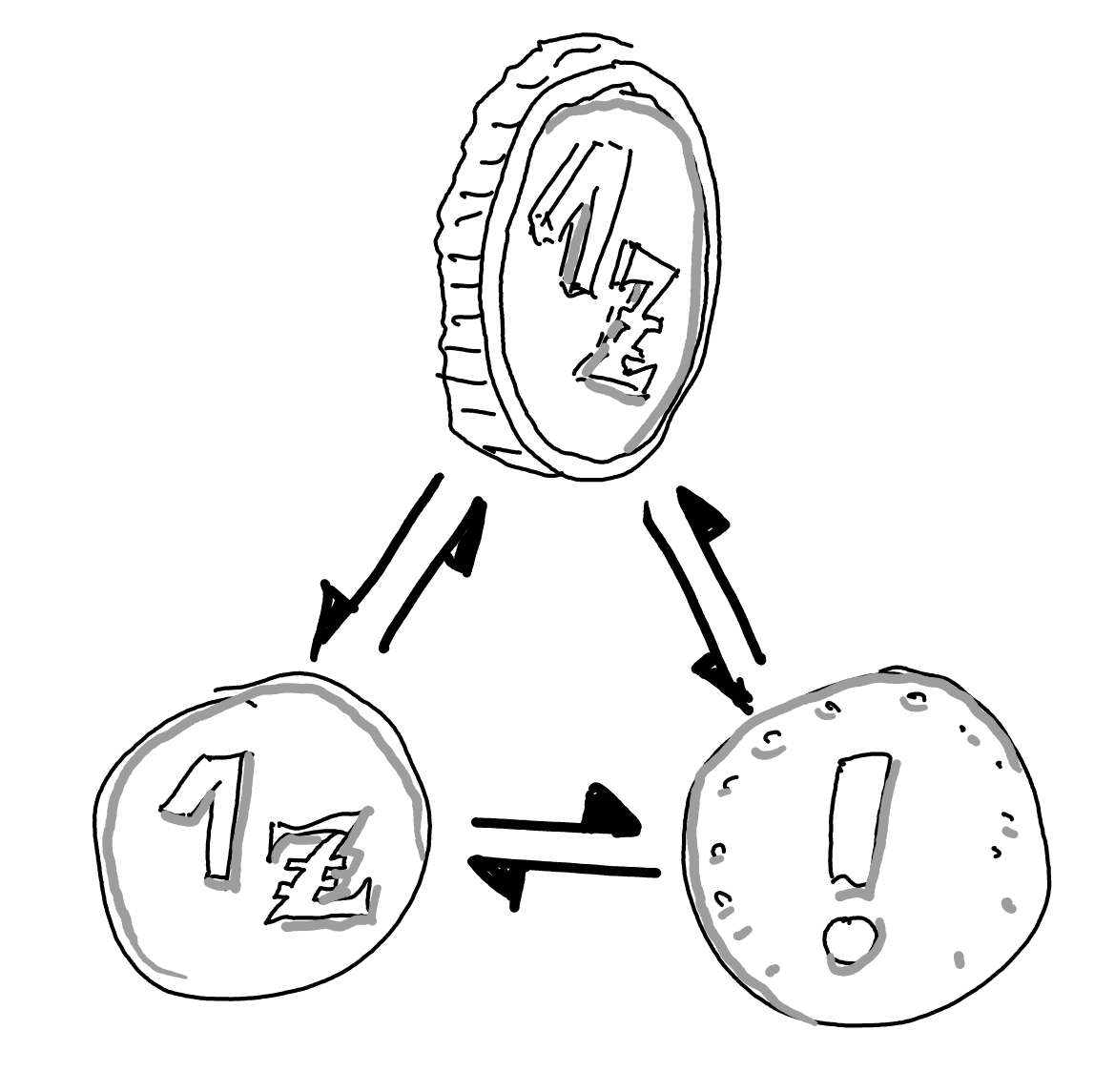Capture the Coin and Its Two Sides as Three Notes
The coin is a metaphor – for a two-sided argument, its pro and contra; for different implementations of a solution to the same problem; for any two opposing ideas and their opposition itself.
The coin and its two sides is a structure of “1 whole and its 2 parts”.
Creating this whole–part structure rigorously can be an algorithmic solution to the problem of expanding your knowledge about a topic.
In this structure, there’s a triangular relationship:
- each side of the coin is related to its opposing side (“is in opposition to”);
- both sides are connected to the whole (“is part of”);
- and the whole of the coin is connected to its sides (“consists of”).

As a result, there’s a total of 6 directed connections between these 3 components. Neither all 3 components nor all 6 connections are worthy of being explored at all times – but all of these are possible to be explored.
You need to apply judgment, as opportunity cost is non-negligible. Wait for utility before going deeper. If you explore oppositions for everything and anything you encounter, you fall into rabbit holes.
Top down and bottom up approach to end with this structure
- Top down: the coin comes first, then its sides.
- Start with a note on the coin (you already know about the opposition and want to capture it fully);
- mention its two sides, and branch off with forward links into two new notes;
- flesh out one side of the coin; consider mentioning the other, opposing side, and also the coin of which this is a side;
- flesh out the other side of the coin; consider mentioning the opposing side, and also the coin of which this is a side;
- Bottom up: the coin comes last, first come its sides.
- Start with one side of the coin (maybe this is the only thing you’re aware of right now);
- flesh out the other side (as you learn about it), and keep both sides connected (Create Opposition);
- extract knowledge about the opposition as an opposition into a note itself. This way, the coin comes last.